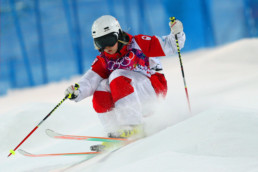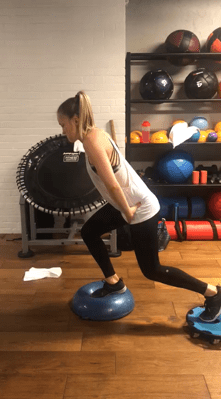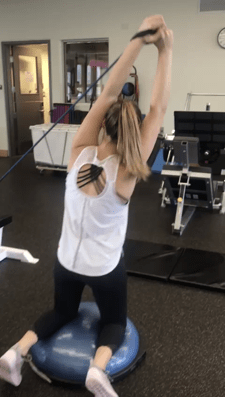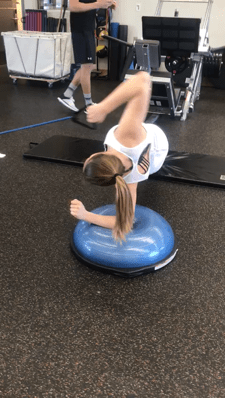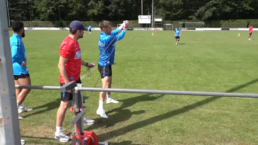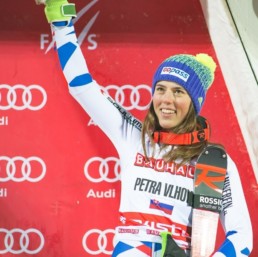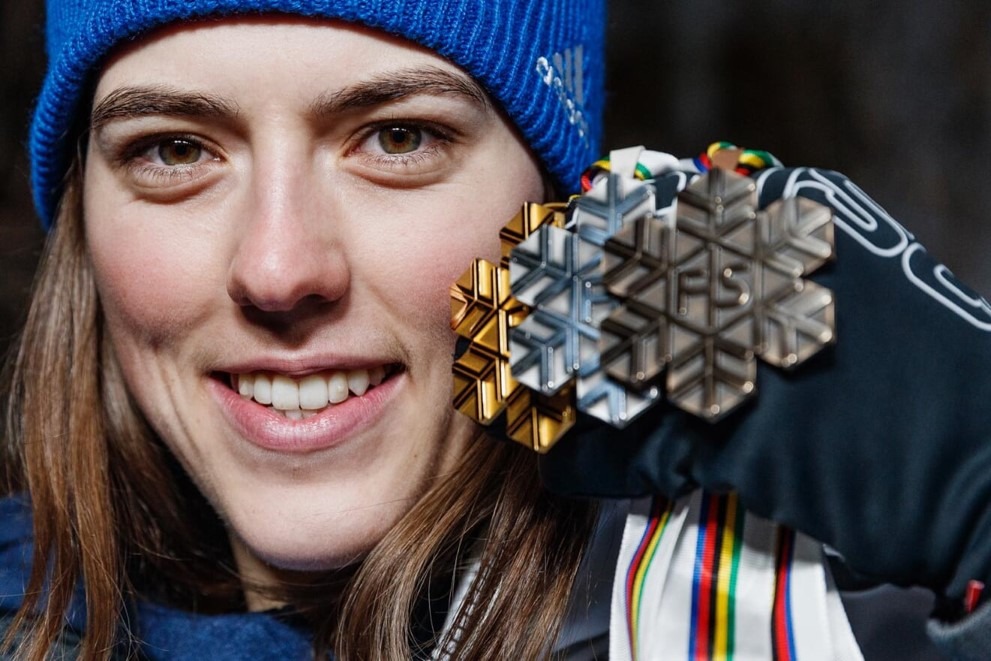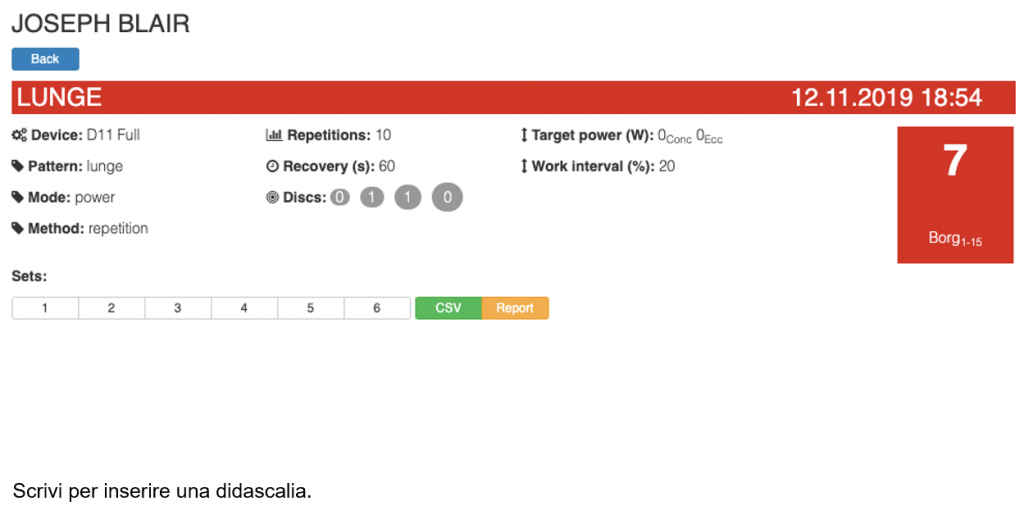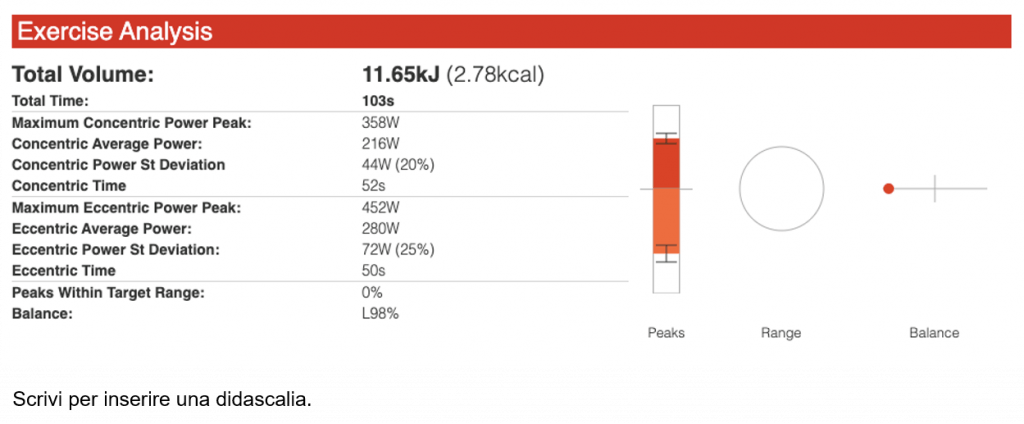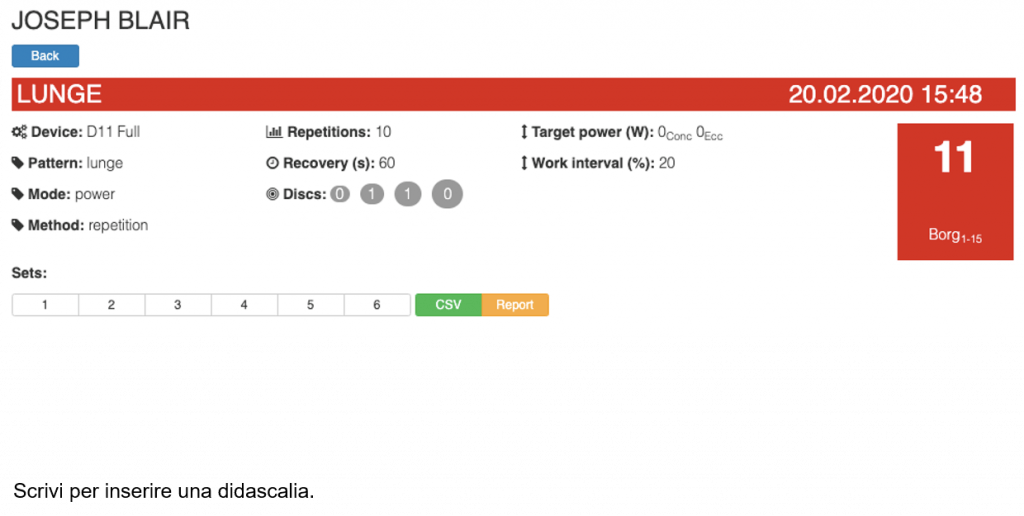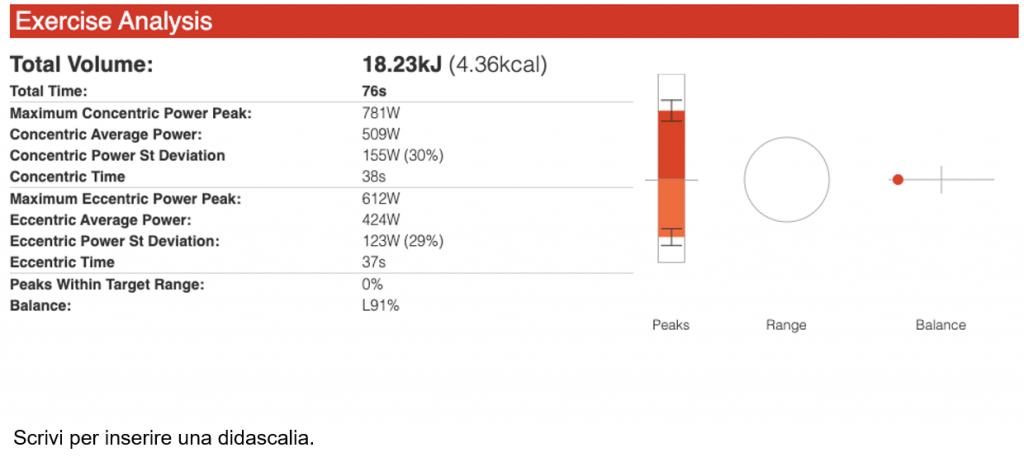Integrating DTS Technology into a Training Protocol: Mogul Ski
INTRODUCTION
DTS can be easily integrated into specific training programmes for sport disciplines such as Mogul Ski. The training programme could be split into three different phases:
- In the first phase of “dry” conditioning, free weights and free-body exercises were used.
- In the second conditioning phase, Desmotec was introduced to support work with overloads/free body. In this phase inertias were used to stimulate a greater acceleration and deceleration component.
- In the third phase, that of approaching the races, the number of inertias was reduced to work more on the speed of the movements. Desmotec played a central role during the competitive period. The inertias were modulated according to the requests. Often it was also used as a neuromuscular “activation” the day before or the day of a competition.
SUBJECT
| Gender | Female |
| Age | / |
| Job | Pro-Athlete |
| LIFESTYLE |
Agonistic |
OBJECTIVE TO BE ACHIEVED:
Preparation for Mogul Ski professional competitions
TRAINING PLAN
WARM UP LOWER BODY
(2 SETS of each 15 seconds duration)
- Exercise 1: on V.line 15 sec each movements – 1M
- Exercise 2: 2M
- Exercise 3: 3M
LOWER BODY (PART 1) CIRCUIT TRAINING (2 SETS)
- Exercise 1: 15 sec duration – 4M
- Exercise 2: 5M
- Exercise 3: 15 sec each leg. – 6M
LOWER BODY (PART 2) CIRCUIT TRAINING (3 SETS)
- Exercise 1: V.line step up (15 sec each leg) – 7M
- Exercise 2: 8M
- Exercise 3: Lateral hop 15 sec duration – 9M
- Exercise 4: 15 sec duration – 10M
- Exercise 5: 6 jumps – 11M
PROTOCOL
SKI CONDITIONING
CIRCUIT TRAINING
(each station is 4×15’’ with 5’’ rest only between movements – 5 SETS for a total time of 15 minutes of work)
- Exercise 1: Bike: use towel or water in mouth to only breath through the nose – 12M
- Exercise 2: V.line Side shuffle (2 sets each side) – 13M
- Exercise 3: In out on quick feet on trampoline – 14M
CORE
CORE CIRCUIT TRAINING
(3 SETS of 20’’ each)
- Exercise 1: Hip raise on Bosu – 15M
- Exercise 2: V up on Bosu – 16M
- Exercise 3: Side bridge rows on bosu – 17M
- Exercise 4: Overhead side bend on Bosu – 18M
- Exercise 5: – 19M
RESULTS
The integration of the DTS technology with the training tecniques adopted for the preparation of professional Mogul Ski competitions, allow the athlete to perform a specific muscular strengthening programme, thanks to the eccentric training. Furthermore, the opportunity to consult his training results in real time, gives him the possibility to correct his own mistakes and adapt his training programme to any situation.
CONCLUSIONS
The Desmotec devices allows to collect, store and share the progression data of any single athlete, providing the opportunity to consult and studying the progresses. DTS technologies also prevented a lower lumbar overload, usually a consequence for this kind of training performed in the traditional way.
Would you like to know more about DESMOTEC technology, devices and training methods?
How to insert Desmotec into a Training Protocol - Football
INTRODUCTION
- Pre season workouts: Strength and power workouts
- In season workouts: maintaining/strength and power stimulation/pre training activation
- Return to play and Injury Prevention: Controlled eccentric overload with software unbalance feedbacks
Olympique de Marseille TRAINING PHYLOSOPHY (17/18)
- Load progression based on each player’s coordination ability
- Moving by subsequently coordinative steps to allow safety and complete movement control
- First goal: improve the specific movement efficiency under stress
2 ways to achieve eccentric response, based on the goal:
- ANALYTICAL WAY: prevention and strengthening
- FUNCTIONAL WAY: activation and strengthening
Progressions based on 2 elements: EXERCISE COMPLEXITY and LOAD
- start from a simple movement, add complexity, then add rotations and at the end add unbalance; it is crucial to respect the steps
- load selection is based on the GOAL: opposite from the weightlifting.
- RECOVERY WORKOUTS: high inertias (PRO) to use when the muscles are stressed (after match) -> no high speed reached, less risk in the eccentric phase
- PREVENTING ANALYTICAL WORKOUT: medium inertias (L+M) searching for movement control that will lead to efficiency
- PERFORMANCE WORKOUTS: little inertias -> extremely fast muscle contraction -> high risk if the athletes don’t have a good movement coordination (btw, you can use low inertias in reeducation but with slow speed)
SCENARIO EXAMPLE
GAME DAY: SUNDAY
MONDAY: STRENGTH CIRCUIT TRAINING (only for who did not play on Sunday)
STRENGTH on +3 and -2 from Game Day
ADDITIONAL INDIVIDUAL CONDITIONING TRAININGS
PROTOCOL
TEAM WORKOUT BASE: on D. squatting, on V. CORE, ROTATIONAL, C.O.D., Specific 4 directions workout for goalkeepers, more analytical for individual conditioning trainings
STRENGTH 1 (+3 FROM GAME DAY)
4-5 STATION CIRCUIT TRAINING with D.LINE for vertical forces and V.LINE for horizontal forces
2 sets of 8-10 reps (in order to have at least 6-8 full power reps)
STRENGTH 2 (-2 FROM GAME DAY)
4-5 STATION HALF CIRCUIT TRAINING
2 sets of 4-5 reps -> to be done before the field training in order to have neuromuscular activation
Once the players have good movement control on the devices -> CLUSTER METHOD (to have always full power during exercises). PROGRESSION during the year: ADD Exercises COMPLEXITY, ADD SPEED
SOCCER SKILLS
- BALANCE
- POWER(SPEED)
- WORK CAPACITY (ABILITY TO REPEAT)
On V.Line
- unilateral front /lateral lunge
- reverse fly with split squat
- press + lunge
On D.Line
- side to side rotating staggered squat
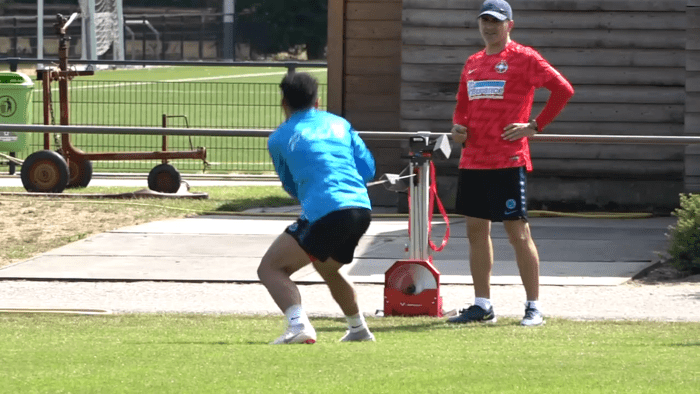
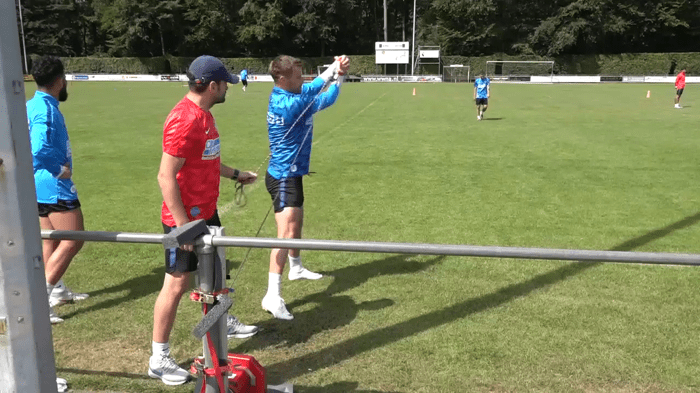
CONCLUSIONS
The integration of Desmotec devices into the proposed training program, allows the athletes to approach a specific training focused on power and muscular strengthening. The opportunity to collect, save and store the training data and evaluate the progress step by step, allows the trainers to analyse the training course and the performances of every athlete. Furthermore, using Desmotec devices, the athlete is subject to lower lumbar overload compared with the traditional methods.
Would you like to know more about DESMOTEC technology, devices and training methods?
Sharing my experience with Petra Vlhova and Desmotec
INTRODUCTION
Who is Petra Vhlova?
- Alpine skiing athlete (giant – slalom)
- Born June 13th , 1995
- 2012-2013 world cup debut
- 4 medals at the World Xhampionships:
– 1 gold (GS 2019)
– 2 silvers (1 AC 2019)
– 1 bronze (SL 2019)
- Season 2019:
– 2nd overall
– 2nd slalom
– 2nd giant
SUBJECT
| Gender | Female |
| Age | 24 |
| Job | Skier |
| LIFESTYLE |
Skier – Competitive Level |
ATHLETIC CONDITIONING:
- Season started on April 9th 2018 with a technical camp
- Season ended on March 22, 2019 with material tests
TRAINING PLAN
- In the first phase of “dry” conditioning, free weights and free-body exercises were used.
- In the second conditioning phase, Desmotec was introduced to support work with overloads / free body. In this phase inertias were used to stimulate a greater acceleration and deceleration component.
- In the third phase, that of approaching the races, the number of inertias was reduced to work more on the speed of the movements. Desmotec played a central role during the competitive period. The inertias were modulated according to the requests. Often it was also used as a neuromuscular “activation” the day before or the day of a competition.
PROTOCOL
| Device | D-Line |
| Test | Max Power Test |
| Tool | – |
| Disk | 1M + 1L |
| Sets | 1 |
| Repetitions | 12 |
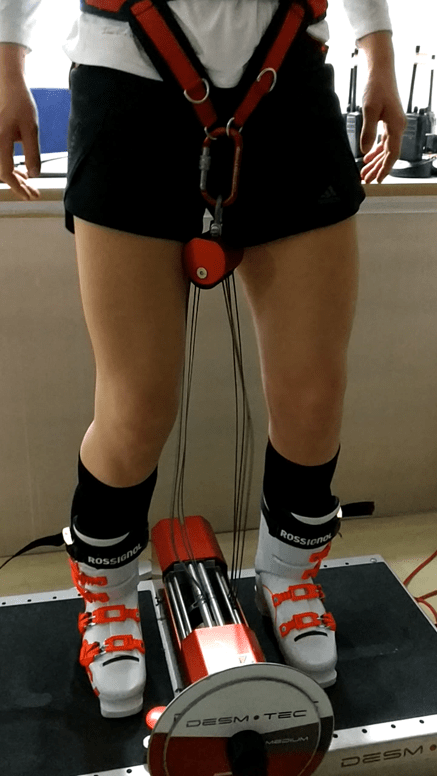
COLLECTED DATA
- During the season body composition data were collected by bioimpedentiometer (Akern / RJL 101)
- Jumping test, squat jump and countermovement jump, via chronojump platform
- Power test on 12 repetitions with 1 large disk and 1 medium disk with DLine Desmotec
RESULTS SJ AND CMJ
RESULTS WITH DESMOTEC
EXAMPLES
Extensive work during summer retreats (in the glacier so no gym)
After warm up:
- SQUAT (1L+1M) 2 sets x 45’’. Rest 3’
- LATERAL SQUAT (1L+1M) 2 sets x 40’’. Rest 3’
- SPLIT SQUAT (1L+1M) 1 x 45’’. Rest 2’30’’
- V-SHAPE (1L+1M) 1 x 40’’. Rest 2’30’’
- At the end do core exercises
- Drop jump (fall from 40cm) with barbell (20-30% of bodyweight) + Immediately jump one hurdle of 70 cm repeat 4 times x 4 sets (rest is free)
- 6 Obstacles jumps in plyometric way (70 cm) x 4 sets (rest is free)
- Squat with Desmotec for 30’’ (2 large disc) x 3 sets
- Lateral Squat with desmotec (2 large disc) x 6 each leg x 4 sets
- Step up explosive x 6 each x 4 sets – with dumbbells
- Norwegian hamstring x4 with 5” hold at maximal position x 3 sets
- Sled Pushing 15 meters with high load S.S Sled Pushing 15 meters lower load (increase speed) – 3 sets
- Side steps resisted with elastic band 3 x 10 meters (or with sled)
- SLDL with KB x6 each side – 4 sets
- Slide board or skates or 30” jumps x 6 times
After warm up (15’ with mobilization /foam rolling and correctives)
- Squat with Desmotec with: V – Shape with 30’’ of work – Rest 30’’ – 1 PROdisc. Try to keep same rhythm. Repeat 3 sets.
- Between each set add 5 meters of pre-athletics movements
- Lateral squat with Desmotec 3 x 20’’ with each leg rest 30’’ between each leg. 1 PRO disc. Try to keep same rhythm . Between each set add 5 meters of pre.-athletics movements
- Rowing with Desmotec 3 x 15 with 1 Large and 1 medium disc. Rest between sets 60’’
- Split squat with Desmotec 3 x 15’’ with 1 large disc + 1 medium. Rest 60’’
- Plank reach 3 x 40’’
- Side plank dynamic on knees 3 x 20 dx,sx
- Sprint training 4 x 10+10 mt completed in 6-8’’ rest 1’10’’
- Stretching
EXAMPLES: PRE-RACE
- Mobilization routine (pre-race)
- Squat(1L) 2 sets x 15’’. Rest 1’15’’
- Lateral Squat (1L) 2 sets x 15’’ L+R. Rest 1’15’’
- Split squat (1L) 1 x 15’’. Rest 1’15’’
- V-Shape (1L) 1 x 15’’. Rest 1’15’’
- At the end: Movement routine
Would you like to know more about DESMOTEC technology, devices and training methods?
CLICK HERE
Training for strength: Example for Basketball Split Squat
INTRODUCTION
- This analysis is focused on physical training of DD, a basketball player of the Youth Academy who has been included in the Main Team during this season.
- The athelte has started to train again after a period of inactivity, he is 19, 196cm , 79,2 kg ha 19 anni, He needs to improve his muscular structure in order to be able to sustain the trainings with a Professional Basketball Team, playing in Italian A2.
- Following a first phase of adapting to training using with small tools (August-September), the athelte carried out a first cycle of hipertrophy with overloads (October-November) and after that, he has carried out a second phase in whichit was also integrated isoinertial training for lower limbs with overloads (November – February).
SUBJECT
| Gender | Male |
| Age | 20 |
| Job | Basketball Player |
| Lifestyle |
Student |
PROBLEM / OBJECTIVE TO BE ACHIEVED
Improving athlete’s physical performances in three phases:
- Adapting to trainings for strength
- Hipertrophy
- Hipertrophy and power
TRAINING PLAN
| PHASE 1 | August – September |
| Goal | Adapting |
| Exercises | Body Weight Squat, 1 Leg Squat to Box, Hip Thruster, Hip Hinge |
| Weekly sessions | 4 |
| Sets and repetitions | 3×12-15 |
| PHASE 2 | October – November |
| Goal | Hipertrophy |
| Exercises | Goblet Squat, 2 Dumbbells Bulgarian Squat, Plate Hip Thruster, Kettlebell Deadlift |
| Weekly sessions | 4 |
| Sets and repetitions | 3×10 |
| PHASE 3 | December – February |
| Goal | Hipertrophy and power |
| Exercises | Barbell Squat, Isoinertial Split Squat, Barbell Hip Thruster, Barbell Deadlift |
| Weekly sessions | 3 |
| Sets and repetitions | 3×10 |
PROTOCOL
| Device | D.Full |
| Test | Split Squat |
| Tool | Integral Harness |
| Disk | Medium + Large |
| PROTOCOL | |
| N° of weeks | 12 |
| Times per week | 1 |
| Sets | 3 |
| Repetitions | 10+10 |
RESULTS – NOVEMBER 2019
RESULTS – FEBRUARY 2020
CONCLUSIONS
From November to February with one isoinertial training session per week, performed before the main basketball trainings with the team:
Total Volume from 11.65J to 18.23J
During the concentric phase
Power peak from 358W to 781W
Power average from 216W to 509W
During the eccentric phase
Power peak from 452W to 612W
Power average from 280W to 424W
CONCLUSIONS – STANDARD DEVIATION
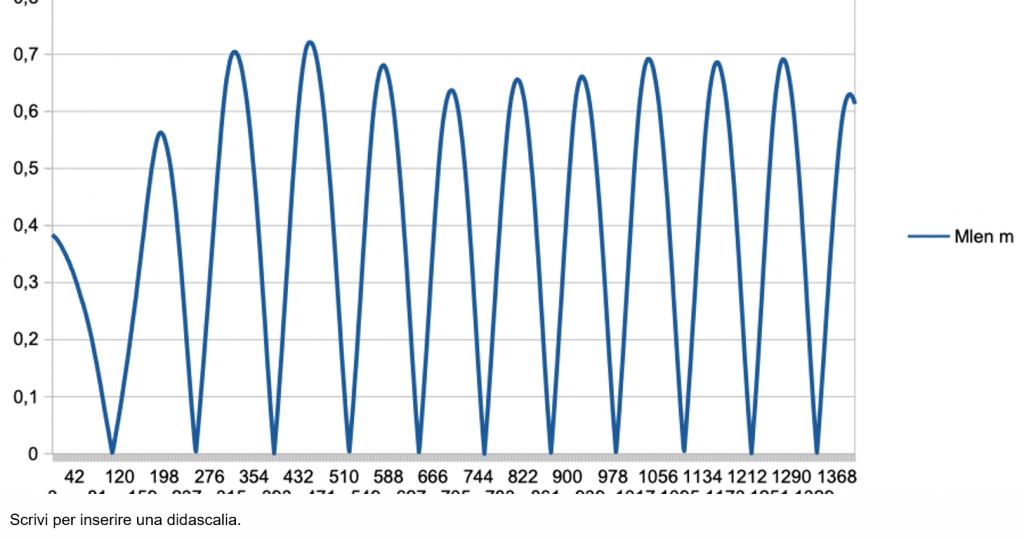
Desmotec allowed me to focus on training lower limbs power, during a regular cycle of strength wit overloads.
In addition, it allowed me to monitor the Watt expressed during every repetitions in both concentric and eccentric phases, in order to verify eventual improvements in peaks and averages reached by the subject.
The Desmotec software allows to monitor the standard deviation: in this particular case it was around 20%. It is possible to analyze the execution of the exercise in case the subject needs to learn it or improve the support.
Would you like to know more about DESMOTEC technology, devices and training methods?
